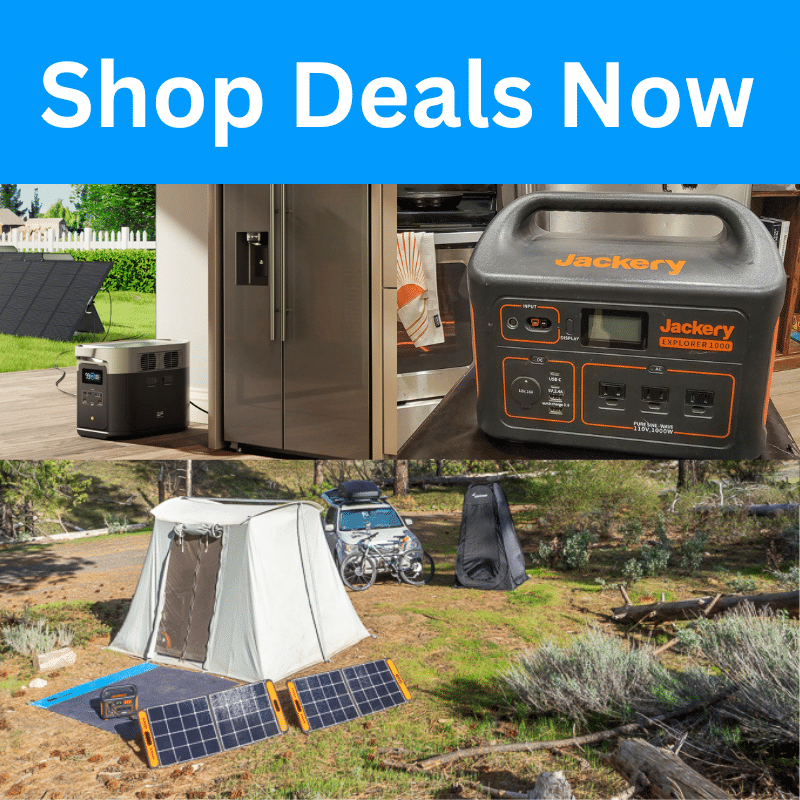WeBoost or other cell signal boosters like WeBoost are essential for working as far off the grid as possible.
I use WeBoost for working while camping, but it works great for RVs, driving, or even in ranch-style homes.
For me, WeBoost is my cell booster of choice when I’m off the grid and need a reliable cell signal and wifi.
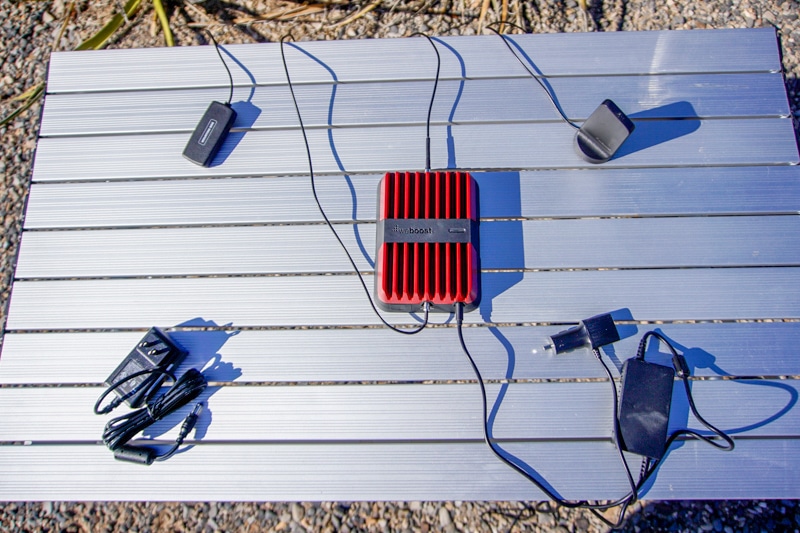
Products like the WeBoost are hard to analyze because the underlying technology isn’t very clear… at least to dummies like me, but I’ll do my best.
Besides a few nerds and patent lawyers, I’m not sure any of us understand how they actually work (a story about that later).
Note: Some product links in this article are affiliate links where I earn a commission if you purchase ANY product on that marketplace. It helps support the website. I have never accepted free or discounted gear. All opinions are my own.
Does WeBoost Actually Work? My Hands On Review
Yes, WeBoost amplifies existing cell signal. You can go from 1 bar to 2 or 3 signal bars while using the WeBoost.
The WeBoost can help me go from barely loading a webpage to being able to work on my web-based applications. For me, this is a huge difference.
A WeBoost will not be as effective for those with larger data demands like uploading large videos.
In addition, WeBoost can be finicky, just like cell signals in general.
See my real-life review in the video below with my Verizon Jetpack. I should have edited it, but it does show enough evidence, in my opinion, of it working.
I run several WeBoost internet speed tests and turn it on and off a few times.
However, it can be hit or miss on boosting cell service depending on your area. There are times I use it, and nothing happens. This is typically in areas where the cell signal is spotty, and you’re bouncing between 0 bars and 3G.
I use the WeBoost Drive, some opt for the WeBoost Drive RV and get better results.
How Does A WeBoost Work?
A WeBoost and similar cell signal boosters amplify existing signals. They cannot create their own cellular signal.
This is a very important distinction and the reason why some customers get upset with WeBoost products.
If you look at your phone and have 0 bars, 99% of the time a WeBoost or similar cell signal amplifier will NOT work.
It’s not a fault of WeBoost, it’s just a limitation of the situation.
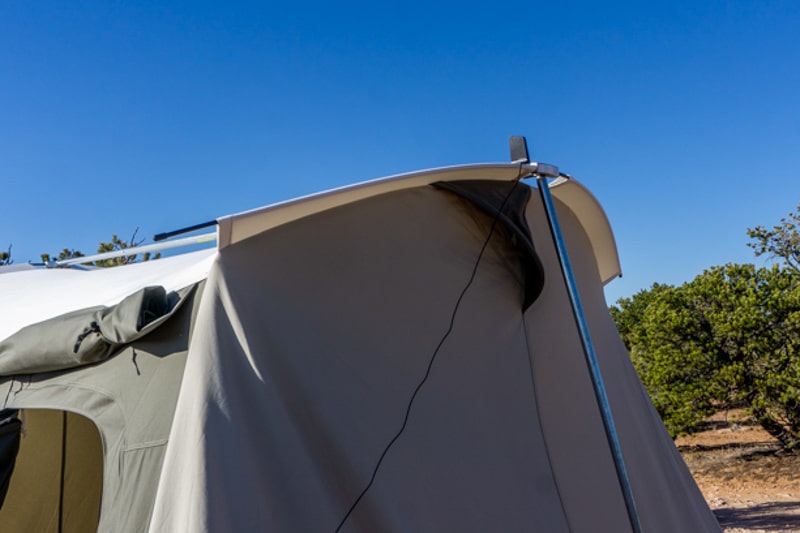
I found that the WeBoost tends to work best when your phone is showing 1 to 3 bars consistently in an area. You’ll typically get an extra signal bar at least.
The biggest difference I’ve noticed is having the WeBoost go from 1 to 2 cell bars which you can see in the video earlier in the article.
WeBoost vs Related Cell Booster Products
I called Weboost before purchasing it. I also called them while writing this post because to better understand why there wasn’t more competition.
I also wanted to understand the cell signal boosters product market for camping and RVers.
I simply asked the representative “why isn’t there a ton of competition?” (this was 2021). At the time, it was HiBoost and WeBoost as the primary companies that I recall looking into.
The guy I talked to mentioned that the inventor, Jim Wilson, holds patents related to the technology. So, competitors are trying to copy them without infringing on the patents which makes a lesser product.
Further digging, WeBoost is the consumer-facing brand of Wilson Electronics.
Wilson Electronics is a large company that employs 200+ (source, LinkedIn) and is based in St. George, Utah. A large company that has “Patents and Trademarks” clearly shown on its website.
Additionally, companies selling cell signal repeaters also have to work with the FCC.
I had to register my WeBost with Verizon when I first bought it due to FCC regulations. It’s going to be pretty hard for a knock-off to compete with them and cover all these regulatory issues.
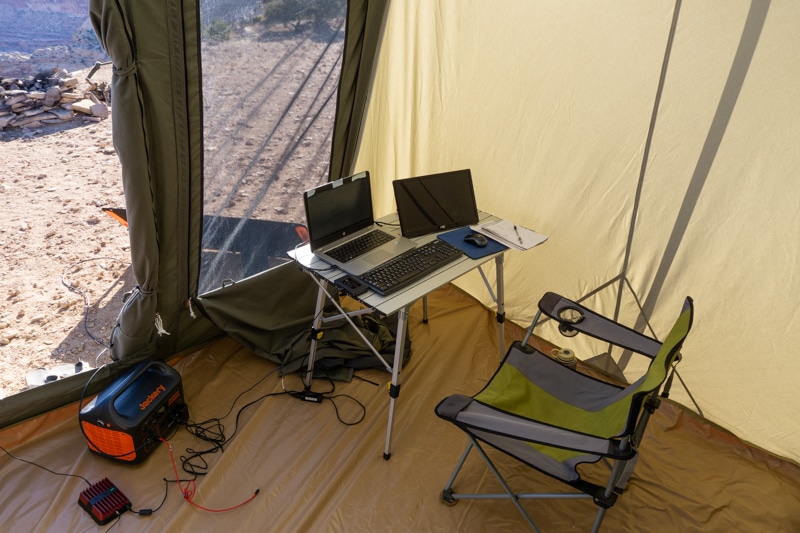
WeBoost vs HiBoost
For camping, RVing, and working remotely on the road, I believe these to be the only 2 real options.
I’ve seen positive and negative reviews for both companies and a few side-by-side comparisons.
Whenever products are close in quality and price, I always pick the company that has been around the longest.
HiBoost Comparison
HiBoost has an RV product here, but there are issues with support and product functionality. I think this is their updated product.
Between the photoshopped images of their product in use and the poor grammar on the images, it is clearly a knockoff with overseas support.
The technical side doesn’t matter as much when the reviews and prices are similar and it’s clearly a knockoff.
WeBoost Support
WeBoost support was easy to get a hold of and I talked to the them twice. The first time was to talk about the differences between their products. The second time was to ask them about the patents and related products.
My WeBoost is the Drive Reach and it works great. This WeBoost Drive Reach OTR is what I see often in the wild for overlanding and RVers.
Lastly, I’ve seen a decent amount of campers with WeBoost and RVers with their 25 ft mounting antenna. I have yet to see a HiBoost mounted on any vehicle.
WeBoost: Getting Internet / WiFi While Camping
On a well-planned trip, I typically only need to use my Verizon Jetpack for my internet source.
Note: there is a one-time fee for the device, then you have to work with Verizon to get it activated and added to your plan. It's cheap to add to existing plans.
I bring my WeBoost when I’m heading into the backcountry.
It has saved me many times when I thought there would be cell signal in an area and there was barely any.
A WeBoost is a great for camping trips if you’re doing web-based work as it can potentially expand the areas you can camp and be connected.
Does A WeBoost Work with Verizon JetPacks?
Yes, WeBoost works with Verizon JetPacks. I’m on the West Coast and I’ve found the combination of a WeBoost and Verizon JetPack to work well together.
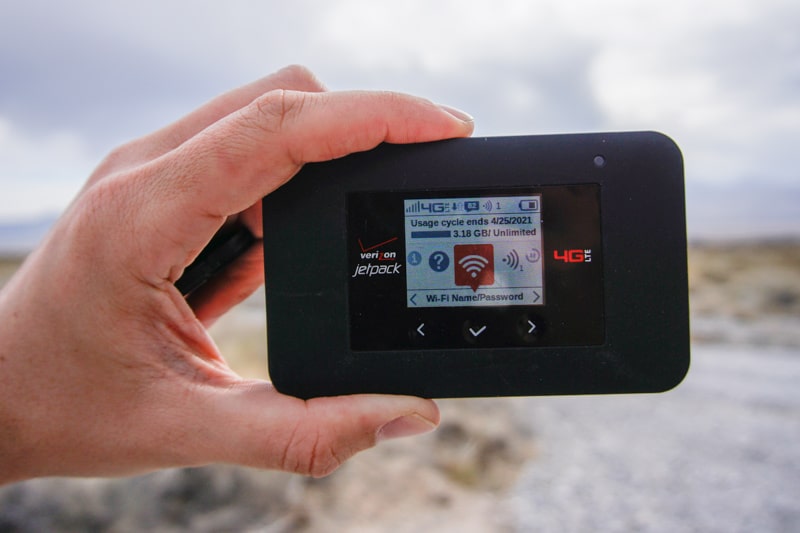
My Verizon Jetpack hot spot has up to 5 bars. Between 0 and 2 bars, I cannot work remotely. If it bounces between 2 and 3 bars, that is enough for web-based applications I use.
Simply moving my Verizon Jetpack inches was enough to go from 1 bar to 3 bars in many places. It’s the difference between waiting a few seconds for a website to load to no lag time.
A WeBoost typically solves this issue and will deliver a more consistent signal.
Reviews of WeBoost: Why So Few?
2023 Update: this isn’t as true anymore because they sell on Amazon, but I’m keeping it in for now!
Why don’t you see many WeBoost reviews when you google? Because they do not have an affiliate program. Many of these websites are put together by “farmed” articles written by people that have never used the products.
They write articles on high-priced products, link to the product, and then get a commission if you buy it.
Well, if you don’t have an affiliate program, the robot warriors of the internet don’t care to write or gloat about your product.
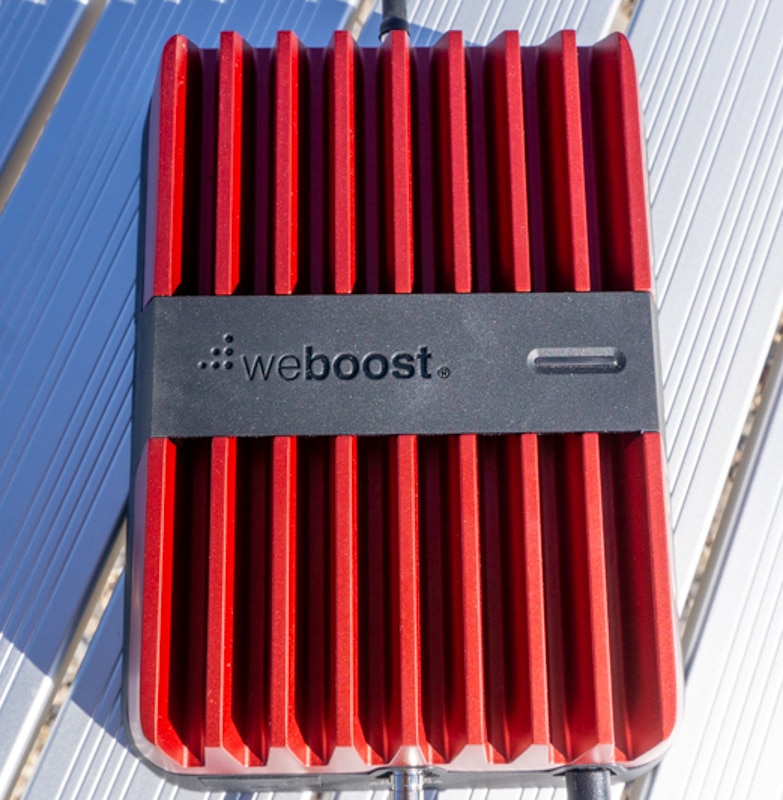
WeBoost Summary: Does It Work?
Yes, WeBoost works. Do not expect it to create non-existent cell signal whenever you want.
It helps you go from 1 or 2 cell signal bars or 2 to 3.
If you’re driving it may help eliminate areas where you typically lose voice signal, but it’s not a solution that is going to work in every situation.
My recommendation is to try it out and you can always return it if you’re not satisfied. They allow you to test it for up to 90 days.
I use the WeBoost Drive, some opt for the WeBoost Drive RV and get better results.
Related Reading


